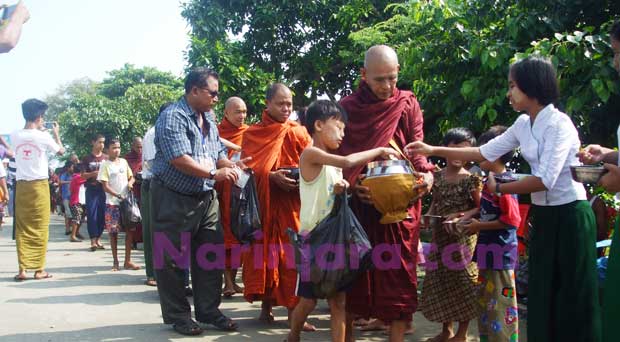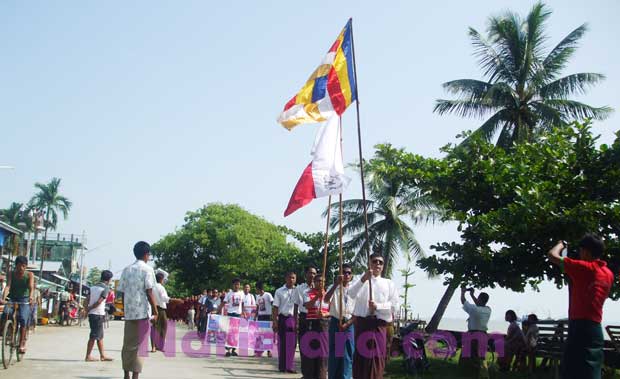As the people of Burma remembered the monk’s revolution across the country Sittwe, the Arakanese capital, also held a commemoration ceremony where 90 monks received donations from devotees.

The eighth anniversary commemoration of the monk’s revolution held on 27th September was jointly organized by the Arakanese Young Monks Association (For Maintaining Discipline and Welfare to the People), The Youth Association of Mizzan Quarter (in Sittwe) and other students and youths from Mizzan Quarter.
U Pinnya Tharmi who manages the information and documentation wing of the Arakanese Young Monks Association said: “The monks struggled and demonstrated in 2007 to free people in Burma from the cycle of poverty. In retaliation solders gunned them down as the country was at the time ruled by the military regime. Many monks were imprisoned and died behind bars.
“We are paying our heartfelt tributes to those great souls on this auspicious occasion”
The monk’s revolution, also known as the saffron revolution, initially started by protesting against the soaring price of essential commodities in Burma. The revolution received huge public support and slowly emerged as a major uprising against the military government.
That uprising has helped Burma to embrace democracy today.

U Pinnya Tharmi said: “I would like the Arakanese people to observe the monk’s revolution day and Ven-Oattaman day by joining hands and putting their differences aside.”
An Arakanese lady who took part in the donation ceremony said she felt very happy and blessed to be able to donate food to the monks on such a great occasion.
“I want to join in all such celebrations in the coming days. I prefer to donate on these sorts of occasions rather than donating at the monastery” she told Narinjare News.
Ko Naing Naing, an Arakanese national, was happy that he had the opportunity to participate in the occasion.
He said: “We expect the new generation to understand the implications of the great monk’s revolution. We would like the young people to know the history of Burma during military rule.”
The monk’s revolution started in Arakan State as the Arakanese people had to face real hardships under the Burmese dictatorship. Initially the monks took to the streets to protest the plight of the Arakanese people before their protests became a major uprising against the then regime in Rangoon.


